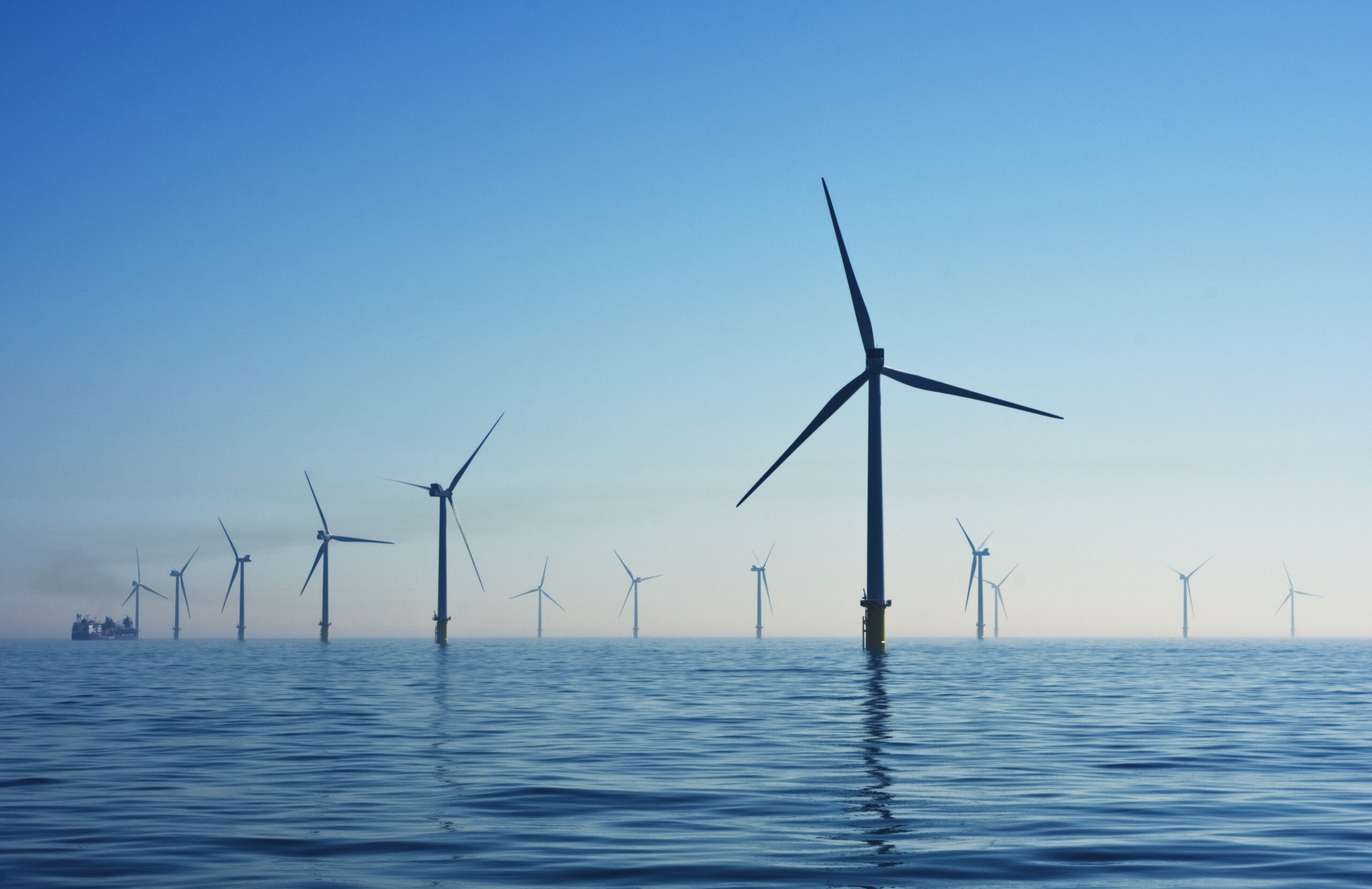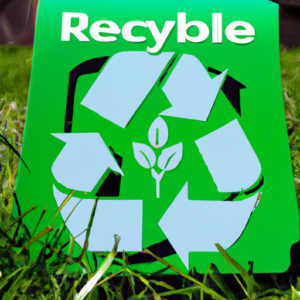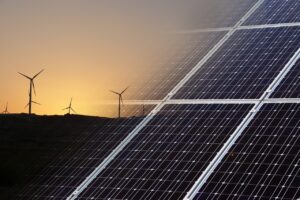How Do Wind Turbines Generate Electricity: Introduction
The Magic of Wind Energy
Imagine standing in a vast open field, the sky above you, the earth beneath your feet, and before you, towering wind turbines gracefully spinning their massive blades. It’s a captivating scene that feels almost magical, but the real magic lies in the engineering and science behind it. How do wind turbines generate electricity? This question has piqued the curiosity of many, from budding environmentalists to experienced engineers.
Unveiling the Science and Engineering
In this article, we will delve into the intricate mechanics and sophisticated engineering that answer the question, “How do wind turbines generate electricity?” From the role of aerodynamics in blade design to the complex systems that convert mechanical energy into electrical power, we’ll dissect each element of a wind turbine to help you understand its inner workings.
Beyond the Blades: A Comprehensive Exploration
But our exploration won’t stop at just the blades and the tower; we’ll also discuss how these marvels of engineering are integrated into larger energy systems and how they contribute to sustainable energy solutions globally. From the mechanics of the turbine to the actual generation of electricity, prepare to be enlightened by the fascinating process that harnesses the gentle gusts of wind to power our world.
A Sustainable Energy Source for a Sustainable Future
As concerns over climate change and resource depletion continue to mount, wind turbines offer a beacon of sustainable hope. Understanding how they function is not just a technical endeavor but a crucial step toward a more sustainable and responsible future.
So buckle up and get ready for an exciting journey into the world of wind turbines. Let’s explore how these towering structures capture the wind’s energy and turn it into electrical power, offering us a sustainable way to light up our lives.
How Do Wind Turbines Generate Electricity: Overview
Wind turbines are large structures that utilize the power of wind to generate clean and renewable electricity. They are designed to convert the kinetic energy of the wind into mechanical energy and then further convert it into electrical energy. Wind turbines play a significant role in reducing greenhouse gas emissions and combating climate change by harnessing the power of nature.
Definition of Wind Turbines
Wind turbines are complex devices that consist of various components, including rotor blades, a gearbox, a generator, a tower, and control systems. These components work together to convert wind energy into usable electricity. The turbines capture the kinetic energy of the wind and transform it into rotational energy that drives the generator to produce electricity.
Components of a Wind Turbine
A wind turbine consists of several key components. The rotor blades, usually made of fiberglass or carbon fiber, capture the energy from the wind and convert it into rotational energy. The gearbox is responsible for increasing the rotational speed of the rotor to a level suitable for the generator. The generator converts the mechanical energy into electrical energy. The tower provides support for the rotor, gearbox, and generator, and it also elevates the turbine to higher altitudes where the wind speed is stronger. Control systems monitor and adjust the turbine’s operation to optimize energy production and ensure safety.
Types of Wind Turbines
There are different types of wind turbines based on their design and application. The most commonly used types are horizontal-axis wind turbines (HAWTs) and vertical-axis wind turbines (VAWTs). HAWTs have a three-blade design and are the most widely deployed turbines worldwide. VAWTs, on the other hand, have a vertical-axis rotation and can capture wind from any direction. Additionally, there are also small-scale and large-scale wind turbines, with each serving different purposes and having varying power capacities.
How Do Wind Turbines Generate Electricity: Wind Energy Conversion
Conversion of Wind Energy to Mechanical Energy
The conversion of wind energy to mechanical energy is the first step in the process of generating electricity from wind turbines. When the wind blows against the turbine blades, the aerodynamic design causes the blades to rotate. The rotation of the blades drives the main shaft, which is connected to the gearbox. The gearbox increases the rotational speed of the rotor from the lower wind speed to a rotational speed adequate for electricity generation.
Conversion of Mechanical Energy to Electrical Energy
Once the rotor blades have converted wind energy into rotational mechanical energy, the gearbox transfers the high-speed rotation to a low-speed shaft connected to the generator. Inside the generator, electromagnetic coils rotate within a magnetic field, creating an electric current through the process of electromagnetic induction. This electric current is then conditioned and transformed into the appropriate voltage and frequency for transmission and distribution through the power grid.

Check Out Our Top Eco Friendly Product Picks On Amazon Here
How Do Wind Turbines Generate Electricity: Blade Design
Importance of Blade Design
The design of the wind turbine blades plays a critical role in the efficiency and performance of the turbine. The efficiency of a wind turbine depends on the ability of the blades to capture the maximum amount of wind energy and convert it into rotational energy. The shape, length, and material composition of the blades impact the aerodynamic behavior, load distribution, and overall performance of the turbine.
Common Blade Shapes
There are various blade shapes used in wind turbine design, with the most common being the airfoil shape. Airfoil-shaped blades are curved on one side and flat on the other, allowing for efficient lift and drag forces when wind flows across them. Another common blade shape is the swept-back design, which reduces drag and noise while increasing stability. Additionally, some turbine models utilize variable pitch blades, which can adjust their angle to optimize performance at different wind speeds.
Factors Influencing Blade Design
Numerous factors influence the design of wind turbine blades, including wind speed and direction, site conditions, desired power output, and noise reduction. The blade length determines the rotor diameter and has a direct impact on the amount of wind energy captured. Additionally, the material composition of the blades must be considered to ensure durability, weight reduction, and cost-effectiveness.
Wind Turbine Operation
Starting the Wind Turbine
When wind speeds reach a certain threshold, the wind turbine’s control system activates the turbine and starts it spinning. Small electric motors or hydraulic systems are used to rotate the turbine blades into position and align them with the wind direction. Once the blades are properly aligned, the generator is engaged, and the turbine begins producing electricity.
Power Generation Process
As the wind flows across the rotating blades, they extract the kinetic energy and convert it into rotational energy. The rotational energy is transmitted through the gearbox to the generator, where it is transformed into electrical energy. The electricity produced by the generator is then conditioned and converted to the appropriate voltage and frequency for grid integration.
Shutdown and Stopping of Wind Turbine
There are instances when a wind turbine needs to be stopped or shut down. This can occur during maintenance, severe weather conditions, or when the demand for electricity is low. To stop the turbine, the control system prevents the generator from producing electricity and engages the braking system to slow down the rotor speed gradually. Once the rotor speed reaches a safe level, the turbine is fully stopped, and the blades are feathered to minimize any resistance from the wind.
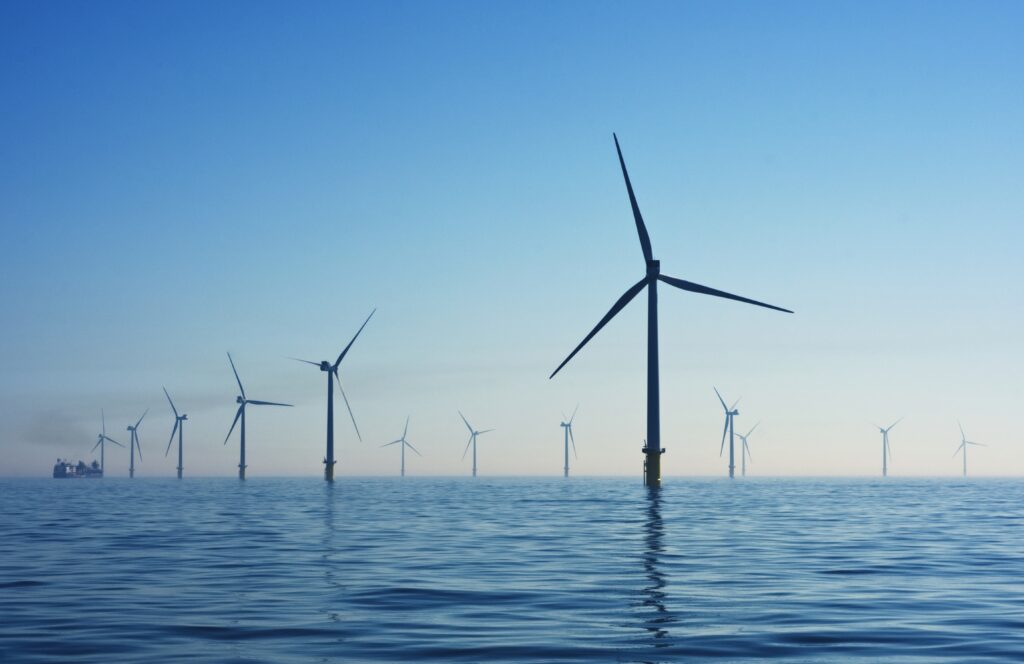
Wind Turbine Efficiency
Factors Affecting Wind Turbine Efficiency
Several factors influence the efficiency of wind turbines. One of the most significant factors is the wind speed. Higher wind speeds result in increased energy production since more kinetic energy is available for conversion. The design of the turbine, including blade shape, length, and material composition, also affects its efficiency. Additionally, the maintenance and operation of the turbine, such as regular inspection, cleaning, and lubrication, can impact its overall performance and efficiency.
Maximizing Wind Turbine Efficiency
To maximize the efficiency of wind turbines, ongoing research and development strive to improve various aspects of turbine design, such as blade aerodynamics, control systems, and material technologies. Additionally, optimizing the siting of wind turbines based on wind resource assessments and selecting appropriate turbine models for specific wind conditions can ensure maximum energy capture and utilization.
Wind Turbine Locations
Choosing Suitable Wind Farm Locations
Selecting suitable locations for wind farms involves various considerations. The most crucial factor is wind resource assessment, which involves collecting data on wind speed, direction, and turbulence at potential sites. Other factors include available land area, environmental impact assessment, proximity to the electrical grid, and local regulations and community acceptance. Comprehensive planning and assessment help identify areas with high wind potential and minimal constraints.
Land and Offshore Wind Farms
Wind turbines can be installed both on land and offshore, each with its own advantages and challenges. Land-based wind farms are more common and usually utilize larger turbines due to the availability of space. They can be integrated into existing agricultural or industrial areas, minimizing land use conflicts. Offshore wind farms, on the other hand, benefit from stronger and more consistent winds, but they require specialized equipment, face additional logistical challenges, and have higher installation and maintenance costs.
Advantages and Challenges of Each Location
Land-based wind farms offer advantages such as easier access for maintenance and repairs, lower installation costs, and proximity to existing infrastructure. They can be strategically located near population centers, reducing transmission losses and the need for long-distance power lines. However, land-based wind farms may face land use conflicts, visual impacts, and noise concerns in densely populated areas. In contrast, offshore wind farms have the advantage of stronger and more consistent winds, reduced visual impacts, lower noise levels, and a potentially larger capacity for expansion. However, they present challenges in terms of installation, maintenance, higher costs, and the need for specialized equipment and infrastructure.

Grid Connection and Power Distribution
Connecting Wind Turbines to the Electric Grid
Wind turbines are connected to the electric grid through power substations and transmission lines. The electricity generated by the wind turbines is stepped up to a higher voltage level using transformers and fed into transmission lines. These transmission lines transport the electricity to distribution substations, where it is further stepped down in voltage for local distribution to consumers. Advanced technologies enable the seamless integration of wind energy into the existing grid infrastructure.
Distribution of Electricity from Wind Farms
The electricity generated by wind farms is distributed to consumers through existing distribution networks. It is important to ensure a reliable and stable power supply by managing the intermittent nature of wind energy. This is achieved through a combination of forecasting technologies, grid monitoring systems, and smart grid solutions. Power distribution companies play a critical role in balancing the electricity supply and demand to maximize the utilization of wind energy while ensuring grid stability and reliability.
How Do Wind Turbines Generate Electricity: Environmental Impact
Reducing Environmental Impact
Wind turbines offer significant environmental benefits compared to conventional forms of energy generation. They produce zero greenhouse gas emissions, helping to mitigate climate change and reduce air pollution. However, it is important to minimize the potential environmental impacts associated with their installation and operation. This can be achieved through careful site selection, assessing potential noise impacts, mitigating impacts on bird and bat populations, and implementing proper decommissioning plans.
Effects on Wildlife and their Mitigation
The presence of wind turbines can have certain impacts on wildlife, particularly bird and bat populations. To minimize these impacts, wind farms are often strategically sited away from critical bird habitats and migration routes. Avian radar systems and other monitoring techniques are employed to assess the flight patterns and behaviors of birds and bats around wind farms. Additionally, ongoing research and development aim to improve turbine design to reduce the risk of bird and bat collisions and modify operations during critical migration periods.
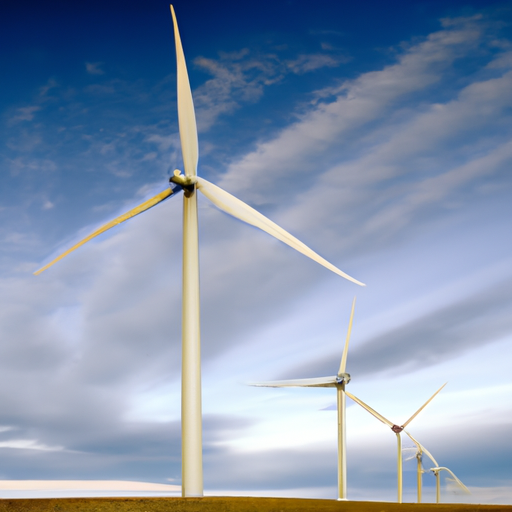
Cost and Economic Viability
Factors Influencing Wind Turbine Costs
Several factors influence the costs associated with wind turbines. These factors include the size and capacity of the turbine, site accessibility and conditions, installation and maintenance requirements, transmission infrastructure, and financing options. Additionally, advancements in manufacturing processes, material technologies, and economies of scale have contributed to cost reductions in recent years.
Economic Benefits of Wind Energy
Wind energy offers numerous economic benefits at both the local and global levels. Wind farms stimulate job creation in manufacturing, construction, operations, and maintenance. Local communities hosting wind farms can benefit from lease agreements, tax revenues, and economic development opportunities. Furthermore, wind energy reduces reliance on fossil fuels, reduces energy price volatility, and enhances energy security through diversification of the energy mix.
How Do Wind Turbines Generate Electricity: Some Fascinating Global Examples
The global adoption of wind energy is a testament to its effectiveness and sustainability. From offshore behemoths to innovative land-based designs, wind turbines are sprouting up around the world to capture the power of nature’s breath. Below, we explore some globally acclaimed wind turbine projects that can help us understand how do wind turbines generate electricity on such grand scales.
The London Array, United Kingdom
A Marvel in Offshore Engineering
The London Array is the largest operational offshore wind farm in the world, located in the Thames Estuary. With a capacity of 630 MW, it can power nearly half a million homes annually. Offshore wind turbines face unique challenges due to the corrosive saltwater environment and more powerful winds. Advanced materials and engineering techniques have been employed to make the turbines resilient and effective. This large-scale project offers profound insights into how wind turbines can generate electricity in challenging conditions, effectively and sustainably.
Gansu Wind Farm, China
The Colossal Land-Based Initiative
Gansu Wind Farm in China is one of the world’s largest wind farms, aiming for a capacity of 20,000 MW by the end of the decade. Located in the Gansu province, this project is a testament to the sheer scale at which wind turbines can operate. The terrain, ranging from flat expanses to hillier regions, offers unique challenges that have been overcome through innovative engineering solutions, showcasing the versatile applications of wind turbines in generating electricity.
Horns Rev 3, Denmark
Pushing the Limits of Innovation
Denmark has long been a pioneer in wind energy, and Horns Rev 3 stands as the country’s latest and largest offshore wind farm. Located in the North Sea, it features cutting-edge turbine technology, including some of the world’s most massive and efficient turbine blades. The project pushes the boundaries on how do wind turbines generate electricity, incorporating advanced features like active pitch and yaw control to optimize energy capture in varying wind conditions.
Macarthur Wind Farm, Australia
A Leap in Sustainable Energy Down Under
Macarthur Wind Farm is Australia’s largest operating wind farm, generating enough electricity to power more than 220,000 homes each year. What’s intriguing is its combination of 140 Vestas V112-3.0 MW wind turbines, specifically designed to harness the full potential of the windy conditions in the region. It serves as an example of how localized engineering can maximize energy production, giving us lessons on the adaptability required in answering how wind turbines generate electricity.
Tehachapi Pass Wind Farm, USA
A Historic Forerunner
Tehachapi Pass Wind Farm in California is one of the oldest and largest wind farms in the United States. It’s a living example of the advancements in wind turbine technology over the years. Earlier turbines at Tehachapi were much smaller and less efficient than their modern counterparts. Today, the site features modern turbines with greater energy-generating capacities, demonstrating the technological evolution in wind energy and how that has impacted the way wind turbines generate electricity.
Each of these global examples showcases unique challenges and engineering solutions in the quest for sustainable wind energy. They serve as real-world classrooms, teaching us about the diversity and adaptability involved in harnessing wind to generate electricity.
How Do Wind Turbines Generate Electricity: The Future
Technological Advancements
As the demand for clean energy continues to grow, wind turbine technology is evolving at a rapid pace. Ongoing research and development focus on improving turbine efficiency, increasing power output, reducing noise levels, and enhancing reliability. Advancements in materials, aerodynamics, control systems, and turbine design are expected to drive further improvements and cost reductions in the future.
Integration with Other Renewable Energy Sources
The future of wind turbines lies in the integration with other renewable energy sources. Hybrid systems that combine wind, solar, and energy storage technologies offer the potential to create a reliable and sustainable energy mix. Such integrated systems can optimize energy production based on available resources and energy demand, providing a more stable and resilient power supply while reducing reliance on non-renewable energy sources.
Wind turbines are a crucial component of the renewable energy sector, harnessing the power of wind to generate clean and sustainable electricity. Their efficient operation, careful design, appropriate location, and seamless integration into the power grid ensure maximum energy utilization while minimizing environmental impacts. Continued advancements in wind turbine technology and integration with other renewable energy sources promise a future powered by clean and abundant wind energy.
How Do Wind Turbines Generate Electricity: Conclusion
Summing Up the Complexity
As we’ve journeyed through the intricate world of wind turbines, we’ve explored the multifaceted engineering and technological aspects that answer the question, “How do wind turbines generate electricity?” From the aerodynamics of blade design to the sophisticated mechanical systems converting wind into usable energy, it’s clear that each component plays a critical role.
Reflecting on Global Examples
We’ve also examined various global examples, each contributing its own unique lesson in scalability, adaptability, and resilience. Be it the offshore challenges met by the London Array or the sheer size of China’s Gansu Wind Farm, these cases demonstrate the tremendous capabilities and future promise of wind energy. They also show that the methods of capturing wind energy can vary greatly depending on local conditions and needs.
The Imperative of Sustainability
The environmental urgency propelling the adoption of wind energy is palpable. Wind turbines stand as a beacon of sustainable development, offering a cleaner, more responsible way to meet our ever-growing energy demands. As we grapple with issues like climate change and resource depletion, understanding how wind turbines generate electricity is not just an intellectual exercise; it’s an imperative for a sustainable future.
The Way Forward
While technological challenges exist, ongoing advancements are continually pushing the boundaries of what wind turbines can accomplish. As a result, wind energy is increasingly becoming more efficient, accessible, and impactful. This forward momentum bodes well for both the industry and the planet.
In closing, the in-depth exploration into the inner workings of wind turbines, highlighted by global examples, underscores the importance and viability of this sustainable energy source. The answer to “How do wind turbines generate electricity?” is complex yet profoundly inspiring, offering a glimpse of a more sustainable and cleaner future for all.

